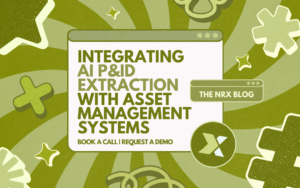According to widely reported estimates from the International Society of Automation, manufacturers across all industries lose approximately 5% of plant production each year to unplanned downtime, which results in a global economic impact of nearly $647 billion. In a landscape where equipment reliability is directly tied to productivity and profitability, prioritizing critical asset maintenance is both operationally smart and essential.

Understanding Critical Asset Maintenance
Critical asset maintenance refers to the targeted care and oversight of physical assets whose failure would result in significant disruption, cost, safety risks, or regulatory violations. These are not necessarily the most expensive assets, but rather those whose impact on operations is disproportionately large. To define and manage them efficiently, maintenance teams rely on structured frameworks such as Failure Modes and Effects Analysis (FMEA) and criticality matrices.
FMEA is a systematic method for evaluating potential failure modes within a system and their effects on performance. Each failure mode is scored based on severity, occurrence, and detection, which produce a Risk Priority Number (RPN). The higher the RPN, the greater the priority for intervention. This structured approach minimizes guesswork and provides traceable logic for maintenance planning.
Applying a Criticality Matrix
A criticality matrix, on the other hand, classifies assets based on their likelihood of failure and the consequences of that failure. Maintenance planners use a grid to assign scores to each asset across these two axes. This visual prioritization tool helps determine which assets should receive immediate attention and which can be placed on routine schedules.
For example, in a pharmaceutical manufacturing plant, the cleanroom HVAC system might score high on both consequence and likelihood scales. A failure could compromise product sterility and halt production. In contrast, a secondary conveyor belt may have a low impact on safety or compliance and can be addressed with less urgency.

Benefits of Prioritization
Implementing a prioritization model improves resource allocation, especially when labour and budget are constrained. Rather than spreading efforts thinly across all assets, teams focus where it matters most. According to McKinsey, organizations that optimize asset maintenance can reduce maintenance costs by 18 to 25%.
Aligning Tools with Technology
Modern maintenance management systems, such as CMMS and EAM platforms, enhance this approach. These platforms collect performance data, failure history, and work orders. Integrating that data into FMEA or criticality matrices allows for dynamic prioritization that evolves with asset conditions and environmental factors.
Final Thoughts
Prioritizing critical assets requires more than intuition or legacy knowledge. A data-driven approach empowers maintenance teams to safeguard productivity, reduce risks, and stay competitive in increasingly demanding industries.
Integrating AI P&ID Extraction with Asset Management Systems
ISO 14224 vs Other Maintenance Standards: What Sets It Apart?
Building Trust in Your Asset Data: Strategies for Governance
Share this article




